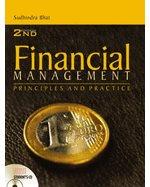THE SETUP: Your best friend Dave just celebrated his 24th birthday and wants to start saving for his anticipated retirement. Dave plans to retire in 36 years and believes that he will have 25 good years of retirement and believes that if he can withdraw $125,000 at the end of each year, he can enjoy his retirement. Assume that a reasonable rate of interest for Dave for all scenarios presented below is 6.5% per year. This is an annual rate, review cach individual question for more specifics on compounding periods per year. Because Dave is planning ahead, the first withdrawal will not take place until one year after he retires. He wants to make equal annual deposits into his account for his retirement fund. U de 2 x A. If he starts making these deposits in one year and makes his last deposit on the day he retires, what amount must he deposit annually to be able to make the desired withdrawals at retirement? A1) First: Amount needed at retirement (3 pts): A2) The amount Dave must save cach year (beginning at the end of the first year) to fund his retirement is (3 pts): A3) If Dave decides to make monthly deposits to reach his same retirement goal, how much must Dave start depositing one month from today? (3 pts)? B. If Dave decides instead to take exotic vacations cach year for the next 5 years, and delay putting aside funds for that time, (1st deposit at the end of 5 years from now, leaving only 31 years to grow his retirement nest ogg), what amount must he deposit annually to be able to make the desired withdrawals at retirement (4 pts)? C. We are now back to Dave starting his retirement investments one year from now. Suppose your friend has just inherited a large sum of money. Rather than making equal annual payments for the entire investment period, he has decided to make one lump sum deposit today to cover his retirement needs. What amount does he have to deposit today? (3 pts) D. We are now back to Dave starting his retirement investments one year from now (36 years to retirement). Suppose Dave's employer will contribute $2,500 to the account each year as part of the company's profit sharing plan. In addition, assume that Dave has a trust fund that will pay out $50,000 to him when he is 40 (16 years from now). What amount must he deposit annually under these assumptions to be able to make the desired withdrawals at retirement? To find the amount of the annual deposit now, it is easier to break down the components of the problem. Doing so for each of the following to find your friend's annual deposit, we get: DI) Value of employer's contribution at retirement (1 pt): D2) Value of trust fund at retirement (1 pt): D3) Remaining amount that Dave needs at retirement (1 pt): D4) (Final answer) Amount to save cach year under these assumptions (1)









